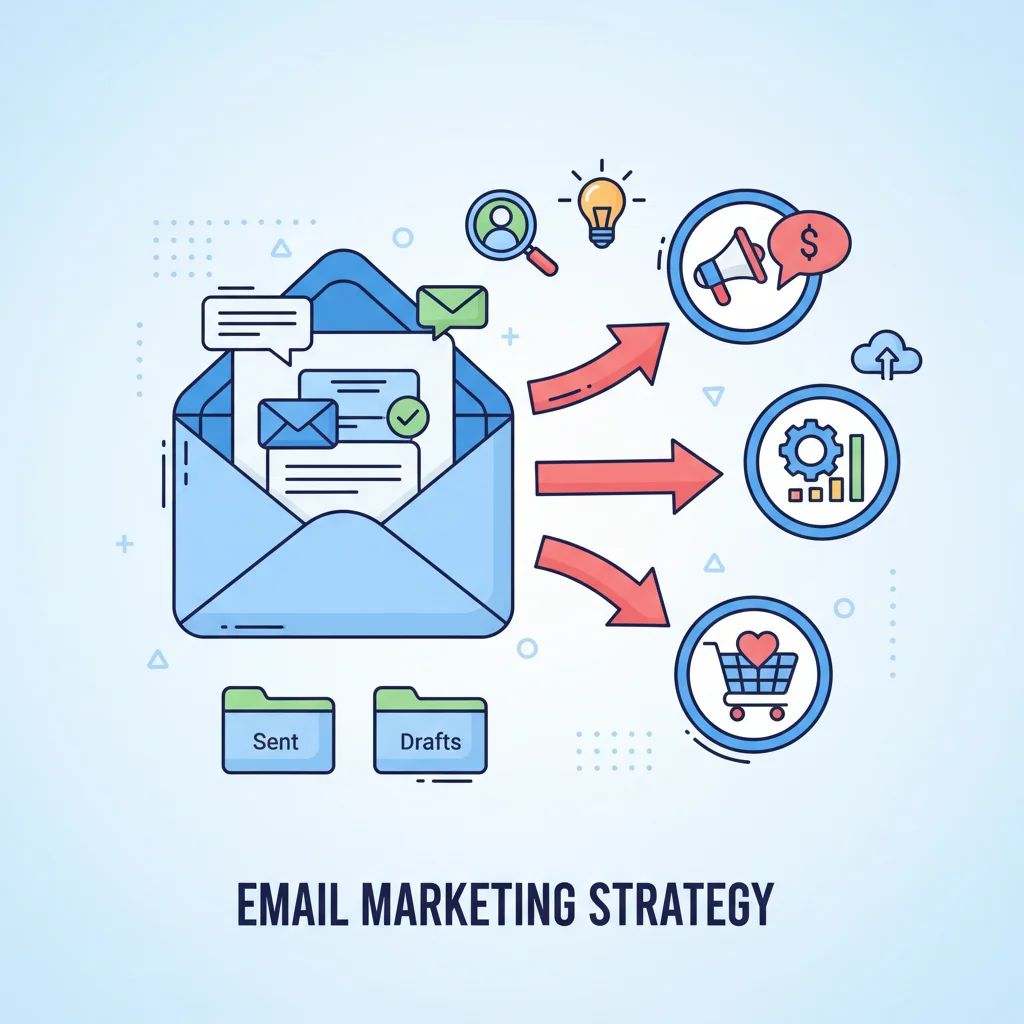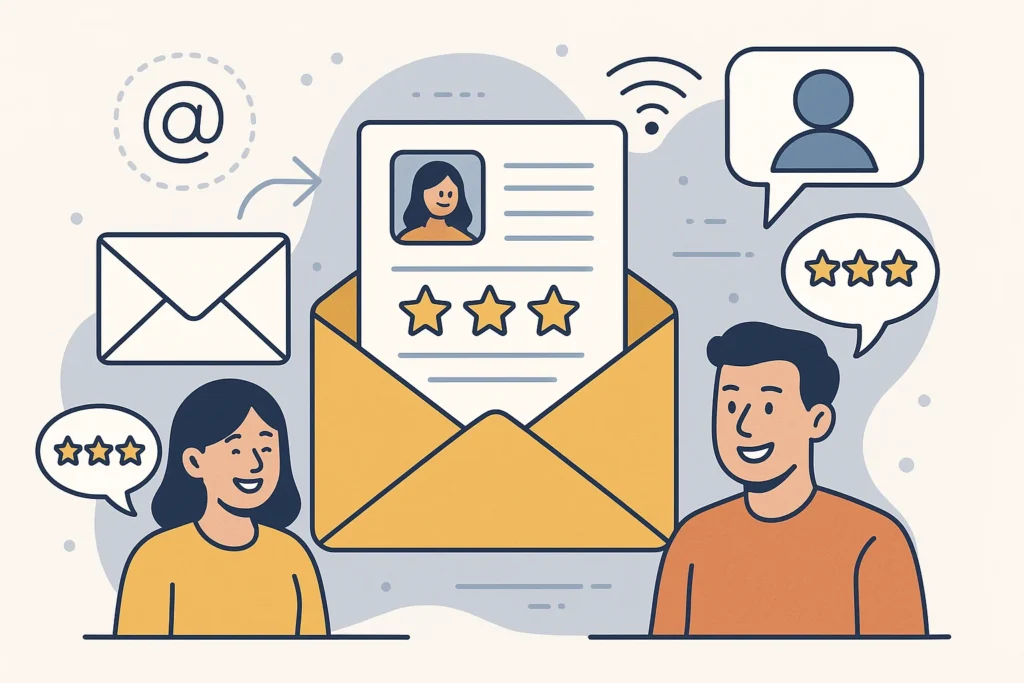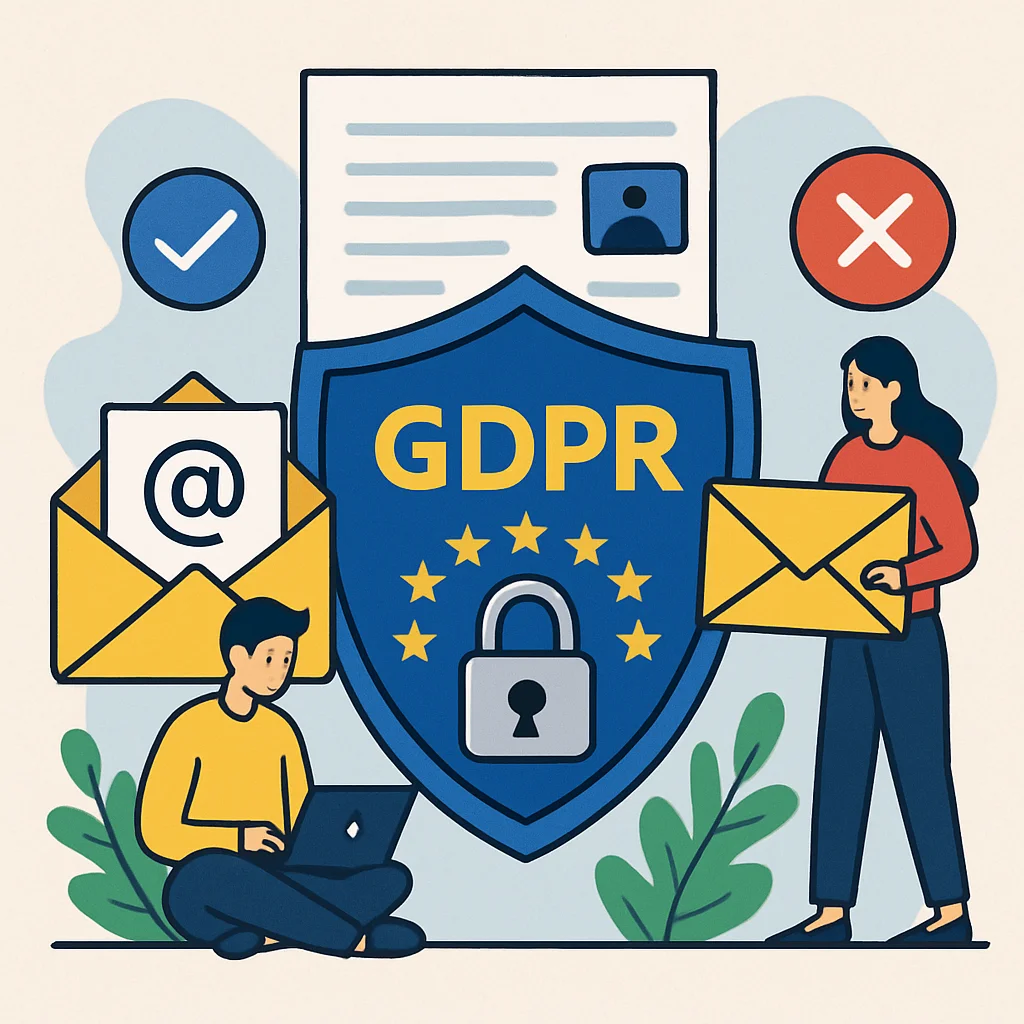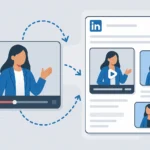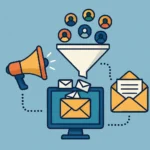Now Reading: 10 Storytelling Email Marketing Templates That Convert Subscribers
-
01
10 Storytelling Email Marketing Templates That Convert Subscribers
10 Storytelling Email Marketing Templates That Convert Subscribers
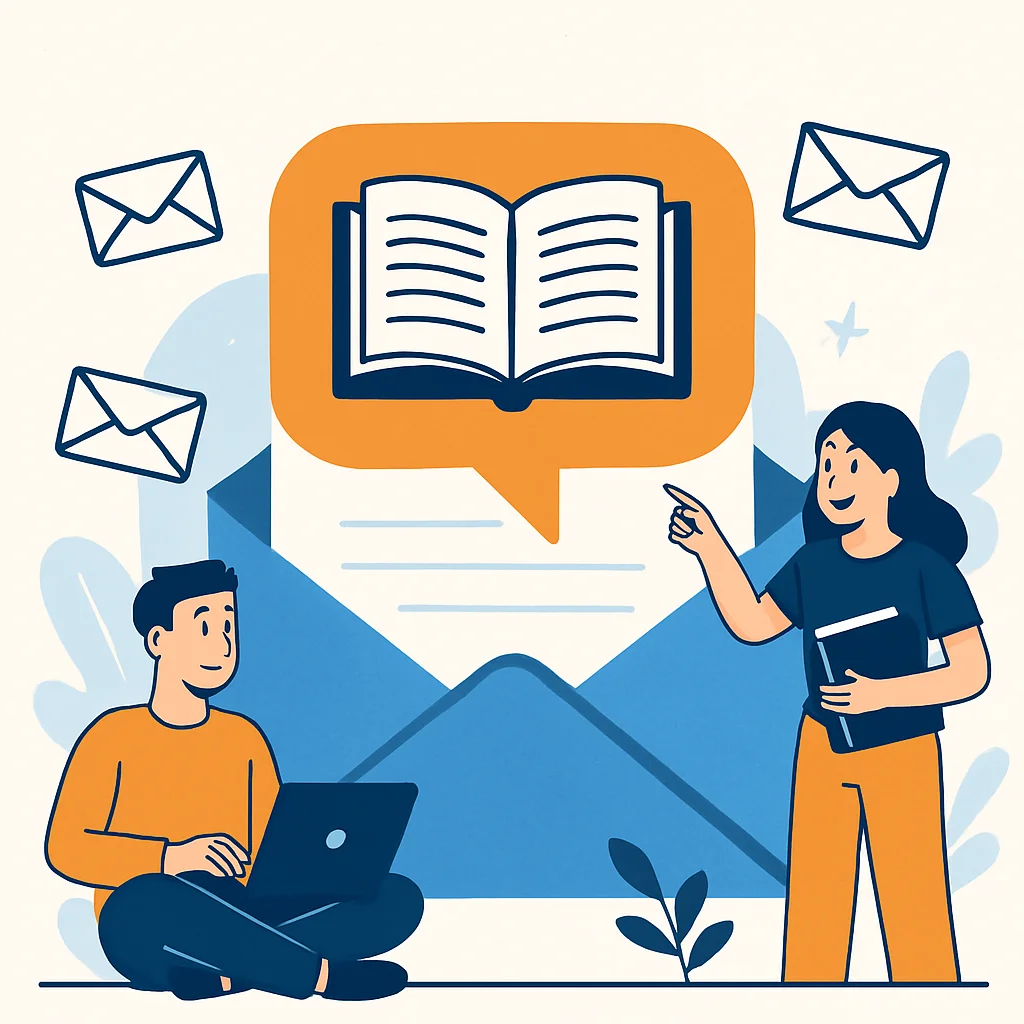
Your subscribers are drowning in a sea of boring, forgettable emails. Every day, their inboxes fill with messages they’ll never open-including yours. This isn’t just frustrating; it’s killing your conversions and wasting your marketing budget. But there’s a solution: storytelling in email marketing. I’ve collected the best examples and techniques to help you stand out in the inbox chaos.
By the end of this article, you’ll have 10 proven storytelling in email marketing templates you can implement immediately to transform your campaigns, create emotional connections, build trust, and drive meaningful action.
Key Takeaways
How to use storytelling in email marketing? Here are 10 email content templates using storytelling:
- Origin Story Template: Share how your company began, focusing on challenges overcome and vision
- Customer Journey Template: Highlight a customer’s transformation using your product/service
- Behind-the-Scenes Template: Reveal your creation process to build authenticity
- Problem-Solution Template: Present a common challenge and how your offering solves it
- Personal Anecdote Template: Connect through relatable experiences from team members
- Milestone Celebration Template: Share company achievements through narrative
- Value-Based Template: Tell stories that reinforce your brand values
- Educational Narrative Template: Teach through story rather than direct instruction
- Seasonal/Timely Template: Connect current events to your brand story
- Interactive Story Template: Engage readers with choose-your-own-adventure style emails
Effective email storytelling creates emotional connections, makes information memorable, differentiates your brand, and drives higher engagement rates.
What Is Storytelling In Email Marketing?
Before diving into examples and templates, let’s get crystal clear on what we’re talking about. Storytelling in email marketing isn’t just throwing random anecdotes into your campaigns. It’s a strategic approach that replaces traditional promotional language with narrative elements that create emotional connections.
When done right, storytelling transforms your emails from forgettable sales pitches into memorable experiences that subscribers actually look forward to receiving. According to research, storytelling can increase a product’s perceived value by up to 20 times-that’s a massive ROI boost just from changing how you communicate!
Stories work because they’re hardwired into our psychology. Humans have been sharing stories for thousands of years-long before written language existed. Our brains are literally designed to process, remember, and respond to narrative structures.
The core elements of email storytelling
Every effective story in your emails should include:
- Characters: Could be your brand, customers, or even your product
- Conflict: The problem or challenge being faced
- Resolution: How your product/service provides the solution
Now let’s explore how to implement these elements with practical templates.
Useful Articles:
10 Email Storytelling Templates You Can Use Today
1. Origin Story Template
Subject line options:
- “The mistake that launched our company”
- “Why I started [Company Name] at my kitchen table”
- “The problem nobody was solving (until now)”
Template structure:
[Opening with founder's moment of frustration/inspiration]
[Description of the problem they personally experienced]
[The "aha moment" when the solution became clear]
[Early challenges in bringing the solution to life]
[How that original vision connects to today's product/service]
[CTA that invites reader to be part of the continuing story]Why it works: Origin stories humanize your brand and help customers understand your purpose beyond profit. They’re especially effective in welcome emails to new subscribers.
2. Customer Journey Template
Subject line options:
- “From skeptic to superfan: [Customer Name]’s story”
- “How [Customer] solved [problem] with our help”
- “The transformation nobody expected (including us)”
Template structure:
[Introduce relatable customer and their initial situation]
[Describe the specific challenges they were facing]
[The turning point when they discovered your solution]
[Initial hesitations or obstacles they overcame]
[The implementation process and early wins]
[The impressive results and transformation]
[CTA for similar results]Why it works: Customer journey stories leverage social proof while demonstrating real-world applications of your product or service. They help prospects visualize their own success.
3. Behind-the-Scenes Template
Subject line options:
- “The messy truth about how we make [Product]”
- “What our team argued about for 3 months straight”
- “The unexpected story behind our newest feature”
Template structure:
[Tease an interesting aspect of your creation process]
[Set the scene with specific details about your workspace/team]
[Introduce a challenge or decision point you faced]
[Share the different perspectives or approaches considered]
[Reveal the ultimate solution and reasoning]
[Connect this process to the value for customers]
[CTA related to the product/feature discussed]Why it works: Behind-the-scenes stories create transparency and authenticity. They satisfy curiosity and make subscribers feel like insiders.
4. Problem-Solution Template
Subject line options:
- “The frustrating problem we kept hearing about”
- “This is why [common task] is so difficult”
- “We found a better way to [solve common problem]”
Template structure:
[Open with a vivid description of a common pain point]
[Agitate the problem by describing its consequences]
[Share how your team recognized and researched this issue]
[Introduce your solution as part of the narrative]
[Explain how it works differently than alternatives]
[Provide proof of effectiveness]
[CTA to try the solution]Why it works: This template follows the classic problem-agitate-solution copywriting framework but wraps it in a story that feels less like selling and more like helpful information.
5. Personal Anecdote Template
Subject line options:
- “What my grandmother taught me about [industry topic]”
- “The embarrassing mistake that changed my approach”
- “What I realized while [everyday activity]”
Template structure:
[Open with a personal moment or realization]
[Set the scene with sensory details]
[Share the challenge or question you faced]
[Describe your thought process or journey]
[Connect the personal lesson to a broader principle]
[Relate this principle to your product/service]
[CTA that builds on the shared insight]Why it works: Personal stories create intimacy and relatability. They show there are real humans behind your brand and help forge emotional connections.
6. Milestone Celebration Template
Subject line options:
- “What we never told you about our first year”
- “The unexpected journey to [achievement]”
- “Looking back: From [humble beginning] to [current success]”
Template structure:
[Announce the milestone with context]
[Flash back to where the journey began]
[Highlight key moments along the way, including challenges]
[Express gratitude for customer/subscriber role]
[Share lessons learned through the process]
[Look forward to what's next]
[CTA that invites continued participation]Why it works: Milestone stories celebrate shared history and reinforce community. They remind subscribers they’re part of something growing and successful.
7. Value-Based Template
Subject line options:
- “Why we said no to a million-dollar opportunity”
- “The promise we make to every customer”
- “The uncomfortable truth about [industry practice]”
Template structure:
[Open with a situation that tested your values]
[Describe the temptation or challenge faced]
[Explain the values that guided your decision]
[Share the outcome of sticking to your principles]
[Connect these values to your product/customer experience]
[Reinforce your commitment to these principles]
[CTA aligned with the values discussed]Why it works: Value-based stories demonstrate what your brand stands for beyond making money. They attract customers who share similar values and build deeper loyalty.
8. Educational Narrative Template
Subject line options:
- “The surprising history of [industry concept]”
- “What [unusual comparison] teaches us about [your topic]”
- “The hidden pattern in successful [relevant activity]”
Template structure:
[Open with an intriguing question or surprising fact]
[Introduce a character or situation that illustrates the concept]
[Walk through the key learning points as part of the narrative]
[Include "plot twists" that challenge assumptions]
[Connect the educational content to practical application]
[Summarize the key takeaway]
[CTA to implement the learning]Why it works: Educational narratives make learning enjoyable and memorable. They transform potentially dry information into engaging content.
9. Seasonal/Timely Template
Subject line options:
- “What this season reminds us about [relevant topic]”
- “The story behind our [seasonal] tradition”
- “What [current event] reveals about [your industry]”
Template structure:
[Connect current season/event to your brand narrative]
[Share relevant history or context]
[Draw parallels between the timely element and your values/products]
[Offer a fresh perspective on the familiar]
[Provide seasonal value or timely advice]
[Include time-sensitive offer if appropriate]
[CTA with urgency element]Why it works: Seasonal stories create relevance and immediacy. They tap into what’s already on people’s minds and provide fresh angles on your brand message.
10. Interactive Story Template
Subject line options:
- “Choose your own adventure: [Topic] edition”
- “What’s your personality? Find out inside”
- “Your [industry] story is about to unfold”
Template structure:
[Set up an intriguing scenario relevant to your audience]
[Present a choice point with clear options]
[Use buttons/links for different paths]
[Create brief but engaging narrative for each path]
[Ensure each path leads to relevant product recommendations]
[Include element of surprise or delight]
[CTA customized to their chosen path]Why it works: Interactive stories create engagement through participation. They provide personalized experiences and valuable data about subscriber preferences.
How To Implement Storytelling In Different Email Types
Different types of emails call for different storytelling approaches. Let’s explore how to adapt these narrative techniques for specific email purposes.
Welcome Emails
Welcome emails are perfect for origin stories and value-based narratives. New subscribers are trying to understand who you are and why they should care about your brand.
Storytelling tips for welcome emails:
- Keep it concise but impactful
- Focus on your “why” rather than product features
- Include a founder photo or team image to humanize the brand
- End with a clear next step that continues the relationship
The Hustle’s welcome email is exemplary-their CEO introduces team members in a light, conversational way that immediately establishes brand voice and creates connection.
Promotional Emails
Promotional emails benefit from problem-solution stories and customer journeys. These narratives provide context for your offer and demonstrate value before asking for the sale.
Storytelling tips for promotional emails:
- Lead with the story, not the promotion
- Create emotional investment before revealing the offer
- Use the narrative to justify any urgency or scarcity
- Ensure the story naturally leads to the product as the solution
Prima’s Mother’s Day campaign demonstrates this beautifully-they appreciate mothers and highlight their impact before introducing a promo code, making the offer feel like a natural extension of the narrative rather than an interruption.
Lead Nurturing Emails
For nurturing leads, educational narratives and personal anecdotes work best. These stories build trust and position you as a helpful guide rather than a pushy salesperson.
Storytelling tips for lead nurturing emails:
- Focus on delivering value through the story itself
- Use serialized content that unfolds over multiple emails
- Include lessons learned from failures or challenges
- Keep promotional elements subtle and secondary to the narrative
Freelancer provides an excellent example by highlighting customer pain points and desires through storytelling, then showing how their service addresses these challenges. Their illustrations perfectly complement the narrative by visualizing the end result.
Milestone Emails
Milestone emails thrive on celebration stories and behind-the-scenes narratives. These create a sense of shared journey and community.
Storytelling tips for milestone emails:
- Acknowledge the customer’s role in your success
- Share vulnerable moments along with victories
- Include visual timelines or growth metrics as story elements
- Look forward as well as backward
Brooks Brothers’ 100-year anniversary email exemplifies this approach by creating a narrative timeline that celebrates their heritage while highlighting innovations that kept them relevant.
Re-engagement Emails
For re-engaging inactive subscribers, problem-solution stories and interactive narratives work best. These create curiosity and offer fresh value to win back attention.
Storytelling tips for re-engagement emails:
- Acknowledge the absence without being accusatory
- Share what they’ve missed in narrative form
- Offer a compelling reason to re-engage
- Include an exclusive offer as part of the story resolution
Useful Articles:
Storytelling Elements That Make Your Emails Stand Out
Now that we’ve covered templates and email types, let’s explore the specific narrative elements that elevate your storytelling.
Characters That Connect
Every compelling story needs relatable characters. In email marketing, these might be:
- Your customers: Showcase real people with real challenges
- Your team members: Humanize your brand with personal stories
- Your product: Give your product a personality and journey
- Your brand: Position your company as a character with values and purpose
Pro tip: Use customer personas to create composite characters that represent your ideal audience. This allows you to tell stories that resonate deeply without always needing specific customer examples.
Conflict That Resonates
Conflict creates tension and interest. In email marketing stories, effective conflicts include:
- External challenges: Market problems, industry limitations, competitor shortcomings
- Internal struggles: Doubts, learning curves, decision-making dilemmas
- Process obstacles: Development hurdles, quality control challenges, supply chain issues
Pro tip: Don’t shy away from sharing real challenges. Vulnerability creates authenticity and makes your eventual solution more impressive.
Resolution That Delivers
The resolution is where your product or service naturally enters the narrative. Effective resolutions:
- Show transformation: Clear before-and-after contrast
- Include specific results: Numbers and measurable outcomes
- Feature emotional payoff: Relief, satisfaction, pride, etc.
- Lead naturally to your CTA: The next logical step in the story
Pro tip: Your resolution should feel earned, not forced. The more authentic the conflict, the more satisfying the resolution.
Writing Tips For Email Storytelling
Creating compelling narratives within the constraints of email requires specific writing techniques:
Keep It Concise
Email isn’t the place for your novel. Focus on:
- Short, punchy paragraphs (1-3 sentences max)
- Clear scene-setting with minimal description
- Dialog that moves the story forward
- One central conflict rather than multiple subplots
Use Visual Support
Complement your written narrative with:
- Images that advance the story rather than just decorating
- Progress indicators for multi-part stories
- Visual metaphors that reinforce your message
- Faces and people whenever possible (we’re wired to respond to human faces)
Create Scannable Stories
Most subscribers skim emails, so structure your stories for scanning:
- Use subheadings to mark story sections
- Bold key moments or revelations
- Break long stories into clearly marked episodes
- Use white space strategically to pace the narrative
Nail Your Subject Lines
Your subject line is the title of your story-it needs to promise value and create curiosity:
- Hint at the conflict without revealing the resolution
- Use questions that trigger the curiosity gap
- Include unexpected juxtapositions
- Personalize when the story is relevant to specific segments
Useful Articles:
Advanced Storytelling Techniques For Email
Ready to take your email storytelling to the next level? Try these advanced techniques:
Serialized Content
Break longer stories into episodes that unfold over multiple emails:
- End each installment with a cliffhanger
- Recap previous episodes briefly
- Maintain consistent characters and themes
- Create a recognizable subject line format for the series
Multi-channel Storytelling
Extend your email narratives across channels for deeper engagement:
- Begin stories in email and continue them on your blog
- Share character backgrounds on social media
- Create video elements that complement written narratives
- Develop interactive elements on your website that advance the story
User-Generated Stories
Invite customers to become co-creators of your brand narrative:
- Run contests for customer stories
- Feature user testimonials as mini-narratives
- Create collaborative stories where customers determine outcomes
- Showcase customer creativity with your products
Micro-Narratives
Not every story needs to be epic. Sometimes tiny stories work best:
- Single-sentence stories that imply larger narratives
- Photo stories with minimal text
- Before-and-after snapshots with brief captions
- Day-in-the-life vignettes
Common Email Storytelling Mistakes To Avoid
Even experienced marketers make these storytelling errors:
Focusing On Features Instead Of Benefits
Stories should illustrate transformation, not specifications. Show how lives improve, not just what your product does.
Being Too Brand-Centric
Your brand should rarely be the hero of the story. Position your customer as the protagonist and your brand as the guide or tool that helps them succeed.
Neglecting Emotional Connection
Facts inform, but emotions drive action. Ensure your stories evoke specific feelings that align with your brand and call-to-action.
Inconsistent Brand Voice
Your storytelling voice should match your overall brand personality. Jarring shifts in tone confuse readers and damage trust.
Missing The “So What” Factor
Every story needs a point relevant to the reader. Always ask: “Why should my subscriber care about this story?”
Adapting Your Storytelling For Different Audiences
Different segments respond to different narrative approaches:
B2B Versus B2C Storytelling
B2B storytelling typically focuses on:
- Process improvements
- ROI and efficiency
- Team dynamics and organizational impact
- Industry trends and innovations
B2C storytelling often emphasizes:
- Personal transformation
- Emotional benefits and lifestyle enhancement
- Identity and self-expression
- Community and belonging
Industry-Specific Storytelling
Tech industry stories might highlight:
- Problem-solving innovation
- Efficiency gains
- Future-focused vision
- Technical challenges overcome
Health and wellness narratives often feature:
- Personal transformation journeys
- Gradual improvement over time
- Expert guidance and support
- Holistic approaches
Luxury brands typically tell stories about:
- Heritage and tradition
- Craftsmanship and attention to detail
- Exclusive experiences
- Status and recognition
Adapt your storytelling approach to match your specific industry context and audience expectations.
Storytelling in email marketing examples show us that narrative isn’t just nice to have-it’s essential for breaking through inbox noise and creating meaningful connections with your audience. By implementing these templates and techniques, you’ll transform your emails from forgettable promotions into compelling stories that subscribers actually want to read.
Start with just one template from this guide, adapt it to your brand voice, and watch your engagement metrics respond. Your subscribers are waiting for a good story-give them one worth opening.


